BroadcastAsia2011: Vendor Q&As
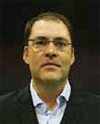
SeaChange International - Stephane Jauroyou, VP Worldwide Sales, Broadcast
How many Broadcast Asia shows, and what other shows do you attend?
Broadcast Asia is the number one professional tradeshow in the APAC region and a good platform to showcase the recent announcements of NAB directly to many of our customers in the region, who are sometimes not able to come to NAB or IBC.
What are the big technical trends driving business in Asia?
The most important trends are tapeless workflows as well as HD migration. A lot of media companies are looking to improve the productivity and increase the amount of media they publish for the many new devices consumers can access.
What are the biggest or most interesting recent installations of your products in the region?
We have several large installations in India, Korea, Australia and China. [Examples are] the continuous expansion at TV18 and Sun TV in India with new HD channels, tapeless workflows with more storage and playout servers… several tapeless workflows installations in Korea with KBS-N and KMH, who deployed large Universal MediaLibrary Grid storage.
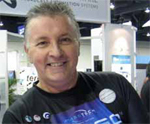
Masstech Group - Brad Redwood, VP International Sales & Marketing
How many Broadcast Asia shows, and what other shows do you attend?
This is our fifth year at Broadcast Asia. We also take part in SMPTE in Sydney and Broadcast India in Mumbai. Broadcast Asia is a good platform for meeting potential regional buyers and gives us the opportunity to network with our customers, dealers and tech partners in Asia. This year we'll be using BroadcastAsia to launch our new product Emerald v7.5LE to the Asian market.
Why Broadcast Asia in contrast to relying on shows like NAB and IBC?
NAB and IBC cover the North American and European markets respectively. Broadcast Asia attracts mostly visitors in the Asia Pacific region. We want to use this as a targeted platform to expand our presence in the region and generate new business opportunities in some of our key growth markets.
What are the big technical trends driving business in Asia?
Launching DTV operations for both fixed and new portable TV devices to allow consumers to experience the benefits of digital television continues to impact APAC. While some regions are still not ready for the SD to HD move, tapeless technology for file based workflows is no longer restricted to the privileged, it is an attractive investment that allows broadcasters to preserve their valuable content and re-purpose the media as new business opportunities arise. Regardless of a facility's size and requirements, advanced digital archiving is now affordable and complete on one common platform. With the increasing demand for content for domestic audiences and to export around the globe, any technology investment that focuses on reducing OpEx will improve the bottom line.
What are the biggest or most interesting recent installations of your products in the region?
We have recently won a number of high profile deals in the region including TV5 in Manila, CEC in India, Thomson Reuters in Hong Kong and more recently Indovision in Jakarta.

Bridge Technologies - Simen Frostad, Chairman
How many Broadcast Asia shows, and what other shows do you attend?
This is our first time at Broadcast Asia, although we have exhibited at Broadband World Forum before. We've been considering Broadcast Asia for many years, and 2011 is the right time for us to connect with broadcast and telecom operators in the region through the biggest and best show.
Why Broadcast Asia in contrast to relying on shows like NAB and IBC?
Broadcast Asia offers the chance to make local contacts and respond to regional requirements with specific functionality. A local presence is essential to help demonstrate commitment to the Asian market, and maintain connections with customers and partners here.
What are the big technical trends driving business in Asia?
Media networks are in a continuous rolling program of infrastructure upgrade improvements, as they respond to the enormous rise in demand from customers. Manufacturers have to provide the technology to enable operators to cope with this ever-increasing demand for more content, and better quality of experience.
What are the biggest or most interesting recent installations of your products in the region?
We cannot comment on recent installations because of contractual reasons, other than to say that we are very excited about our current customers and future developments in the Asian market.
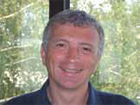
Front Porch Digital - Rino Petricola, SVP & MD
How many Broadcast Asia shows, and what other shows do you attend?
This is at least our tenth Broadcast Asia show, and we also participate in KOBA and InterBee in the same region. BCA is the largest, and the one supported by multiple suppliers. We consider it a great opportunity to gather, network, exchange information, and get updates on market trends.
Why Broadcast Asia in contrast to relying on shows like NAB and IBC?
We appreciate the targeted local focus of Broadcast Asia – more local attendees and consideration of local issues and trends. This helps us develop the most effective way to serve the local market.
What are the big technical trends driving business in Asia?
We at Front Porch Digital believe the need for a future-proof open archive exchange format is keen in Asia as it is throughout the global media industry. This need and associated opportunities will be important regional market drivers.

Miranda Asia - Sin Wai Kok, Regional Sales Manager
How many Broadcast Asia shows, and what other shows do you attend?
Miranda has been exhibiting at Broadcast Asia for many years, and it's a key opportunity for us to meet our customers from across the region, and also make new contacts in the industry.
Why Broadcast Asia in contrast to relying on shows like NAB and IBC?
Broadcast Asia allows us to connect with a much wider range of people in the industry from Asia, and it's also a less frenetic show that encourages more in-depth discussions about upcoming projects.
What are the big technical trends driving business in Asia?
Key trends in the Asia Pacific exhibitions region are channel proliferation, and the requirement to deliver more channels without adding to operating costs. This has led to demands for more efficient playout, branding, and monitoring systems. Another key technical issue facing facilities is the increase in multi-platform playout, and a very significant increase in on-demand content generation.
What are the biggest or most interesting recent installations of your products in the region?
There have been lots of significant projects over recent months. One of the most interesting is the new Miranda system at Astro, which involves a tremendous breadth of advanced systems, spanning both production and playout applications.
Thomson Broadcast - Jean-Pierre Rutteau, International Sales Director, APAC
Why attend Broadcast Asia in contrast to relying on the big shows like NAB ad IBC?
Broadcast Asia is the main event in Asia in our field of activities. This is the best way to meet all our main customers and demonstrate our latest products and technologies.
What are the big technical trends that you see driving business in Asia?
Digital Terrestrial Television is the biggest trend in Southeast Asia at the moment.
What are the biggest or most interesting recent installations of your products in the region?
As regards radio, we recently installed high-power MW and SW transmitters in Bangladesh (Bangladesh Betar) and India (AIR). This equipment will be upgraded with Digital Radio Mondiale (DRM), the latest digital AM standard.
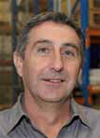
Magna Systems and Engineering - David Bowers, CEO
How many Broadcast Asia shows, and what other shows do you attend?
This is number eight for the Magna Systems Group, so it has been eight years since we began increasing our presence in Singapore. We also go to SMPTE and ABE in the region.
Why Broadcast Asia in contrast to shows like NAB and IBC?
Magna Systems is an Asia Pacific focused systems integration company. We have offices in Sydney, Auckland, Singapore, Hong Kong, and Indonesia. A large part of our business is in South East Asia and Broadcast Asia is where most of the clients in the region go to see the latest in terms of our technology, products, and service offerings. It's a good show as everyone in the region can easily and relatively cost effectively be in one place at the same time. Broadcast Asia has always proven to be a very successful show for Magna Systems and Engineering.
What are the big technical trends driving business in Asia?
Without question the move into IP-based systems, workflows and Asset Management. It's been talked about for a few years and I can tell you we are now officially right in the thick of it. IP or cloudbased offerings are very much changing the way broadcasters do business and how they monetise their assets.
What are the biggest or most interesting recent installations of your products in the region?
As we represent over 50 key industry technology companies and have a significant SI business, we have major installations right across the Asia Pacific region in some of the most prestigious broadcasting facilities including ESPN Star Sports, CNBC, Sony Pictures, Turner, Astro, Ascent Media, and many, many more.
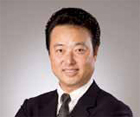
Harris Broadcast Communications - Dario Choi, VP Sales & Service, Asia Pacific
How many Broadcast Asia shows, and what other shows do you attend?
Harris has attended and presented at Broadcast Asia and the accompanying conference for many years, and it represents a key opportunity in the SE Asia region to join our local Harris partners and meet with our customers, build new contacts and showcase our latest products, solutions and technology leadership. Alongside NAB and IBC, we consider Broadcast Asia one of the top three global broadcast events. Harris also participates in several of the leading broadcast events across the region, including KOBA/Korea, BIRTV & CCBN/Beijing and SMPTE/Sydney to name a few.
Why Broadcast Asia in contrast to relying on shows like NAB and IBC?
Harris exhibits at both NAB and IBC, and these two shows provide a valuable platform to meet our international customers and enlarge our new business contacts. We host many of our Asia-Pacific customers at both events. However, many customers that are not able to travel to the two international events are very appreciative of the opportunity to view and explore the Harris workflows, new products and solutions; and to meet with senior Harris product managers at the regional events closer to their home territories.
What are the big technical trends driving business in Asia?
The Connected World is obviously a big theme that we are seeing globally and Asia is no exception. During the last 18 months, 3DTV has captured consumer interest and Harris was well-prepared with 3D-ready products and solutions. Within the professional broadcast industry, our regional focus on the HD transition continues, along with expanding multiformat capability. Asian countries are in the midst of going through the digital television transition. Some are nearing completion, while others have since defined their analogue shut-off plans. This, along with HDTV and 3DTV, will be three key business drivers for Harris in coming years.
What are the biggest or most interesting recent installations of your products in the region?
Harris has several large, diverse installation projects that we have announced during the last year and are either now live or being implemented. These include TPBS (Thailand), Marina Bay Sands (Singapore), AVG (Vietnam), Seven Network and Channel Nine (Australia) and The Universiade (World Student Games, China).
The professional video industry's #1 source for news, trends and product and tech information. Sign up below.

Wohler Asia, Ltd. - Scott Fountain, Director
How many Broadcast Asia shows, and what other shows do you attend?
Wohler has participated continuously in BroadcastAsia since the 1990s. Wohler Asia participates in eight other major regional shows in Asia every year, along with specific private shows across the region.
Why Broadcast Asia in contrast to relying on shows like NAB and IBC?
BroadcastAsia has proven to be an excellent venue with an ideal format for bringing together all aspects of the Asian broadcast industry. The seminars are extremely diverse and headed by a broad range of expert speakers who are well-versed in their areas of specialization. The evenly mixed group of attendees from the government sector, private broadcasters, content creators, consultants, system integrators, local distributors, and overseas principles provides a solid basis for conducting all elements of business under one roof. Wohler's experience at BroadcastAsia is always valuable, with the ideal pace and flow of stand attendees. The customer base is extremely knowledgeable and consists of goal-oriented decision makers with specific requests and an eagerness to share concepts and ideas – which makes our job much easier! NAB and IBC are also key shows for Asian customers and are essential for conducting ongoing business at timely intervals throughout the year. Meeting with customers locally in Asia has its advantages due to the diversity and number of specific visitors from Asia itself.
What are the big technical trends driving business in Asia?
A key technical trend driving business is the growing requirement for multi-channel audio that accompanies HD content. For the best-possible in-home HD experience, end users expect to receive premium HD content that includes associated multichannel audio. As a result, there is strong impetus within the broadcast industry to incorporate Dolby Digital Plus, Dolby E, Dolby Digital HE AAC 5.1, and SMPTE 2020 audio formats. Another rapidly emerging technology requirement is the ability to monitor and control loudness. While relatively new, loudness management is quickly coming to the forefront in the Asian broadcast industry, and countries throughout the region are addressing the issue with a growing sense of urgency. A number of countries are addressing the challenge by enacting legislation to regulate the loudness of on-air broadcasts.
What are the biggest or most interesting recent installations of your products in the region?
Wohler has recently undertaken a number of unique and exciting equipment deployments in Asia. Our video and audio monitors as well as loudness and closed captioning product lines are key system components throughout the region. A few notable installations are a 16 camera OB van, 20-plus channels of content control with Dolby monitoring, and a large closed captioning expansion for an MSO.

Sony Electronics Asia Pacific PSAP - Chris Grey, Head of Broadcast and Content Creation Solutions
Why Broadcast Asia in contrast to relying on shows like NAB and IBC, and what other regional shows do you use?
BroadcastAsia is a platform for us to reach out to our market in the Asia-Pacific region and to be on-ground to understand and focus on value creation for our customers. It also allows us to showcase and demonstrate key features, products and solutions tailored especially for the Asia Pacific market. In Asia, HD penetration is still very low among many countries; Thailand, India, Indonesia is around 10 percent or less. So, technology-wise, HD is definitely a key focus for our customers and Sony is well positioned to advise and to help them prepare a migration path to 3D or 4K for the future. Another major show for Sony in the region is Broadcast India as well as Sony TecXpo – a 'roadshow' style event by Sony that showcases its broadcast and content creation products and solutions. This event takes place in different cities in India.
What are the big technical trends driving business in Asia?
Sony broadcast has always been a pioneer and trendsetter in terms of paving the way in new and cutting edge technologies. OLED technology is an example and 2011 is a year when Sony introduced its two new series of OLED professional field monitors. We believe that once customers start using OLED, it will be difficult to go back to CRT or LCD. Additionally we are talking with customers who are looking for an integrated file-based workflow. Many have separate islands for production, playout, archive etc and are looking to have a 'workflow management solution'. Last year Sony introduced the Mediabackbone solution and this has attracted interest from many key customers.
What are the biggest or most interesting recent installations of your products in the region?
Sony recently completed an upgrade to the Australian Parliament House broadcast and display technologies. In a contract worth over AUD$4 million, the new solution futureproofs Parliament House by enabling high definition (HD) footage to be captured, in addition to standard definition (SD), for distribution to broadcast networks. Installed in the two parliamentary chambers, five committee rooms and television studio, the cameras capture live feeds of Parliamentary proceedings to provide to media who are not able to bring in their own equipment. The feeds are currently provided in SD but will be able to be sent in HD in the future, depending on the requirements of the networks. With installation now complete, the deal encompasses a total of 44 x HSC300 cameras, 2 x PDWF800 XDCAM camcorders, control systems and monitors.

Harmonic - Elson Soong, Director of Sales, SEA and Oceania
How many Broadcast Asia shows, and what other shows do you attend?
Every market is different. By attending BroadcastAsia, both broadcasters and vendors have the opportunity to get a more intimate understanding of the market development and trends in this region.
What are the big technical trends driving business in Asia?
We see that broadcasters are continuing to introduce more HD channels and services. They're now also using delivery of broadcast content across a variety of platforms to capture new markets.
What are the biggest or most interesting recent installations of your products in the region?
ESPN-Star Sports (ESS), an HD sports news production and playout system using the Omneon Spectrum media server and Omneon MediaGrid active storage system, is one of the most interesting Harmonic installations in the region. The approach with this project was to design an open and scalable architecture that would allow ESS to grow a small system, originally comprising four ingest channels, 24TB of central storage and two playout channels, to 16 ingest channels, 64TB of central storage and eight playout channels. ESS was able to keep the system online throughout this phased expansion.
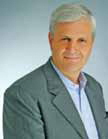
Grass Valley - Karlton Burn, Director South Asia
Why Broadcast Asia, compared to other shows?
Broadcast Asia allows us the time to sit down and talk to our customers which we rarely get the opportunity to do at the larger shows.
What are the big technical trends driving business in Asia?
With the need today of making content available over multiple platforms the trend is towards file-based solutions. Every new installation or major upgrade being worked on in the region is based around file-based solutions.
What are the biggest or most interesting recent installations of your products in the region?
A major installation of a new TV facility would be Maasaranga TV in Bangladesh, this is a 24 X 7 HD Infotainment Channel with three News Bulletins broadcasted in Bangla, with two Studios for News and Programming.

Mosart Medialab AS - Knut Alfred Andersen, Sales Manager
How many Broadcast Asia shows, and what other shows do you use?
I was there last year as visitor, this is the first time Mosart is being demonstrated at BA and we are here to assist our partner Kit Digital in promoting our product and to be closer to the Asian market and customers.
Why Broadcast Asia in contrast to relying on shows like NAB and IBC?
A lot of TV production staff from Asia don't go to either NAB or IBC. Broadcast Asia I hope will give us a chance to speak and demo Mosart to both management and people who work hands on with productions.
What are the big technical trends driving business in Asia?
We see that there's a huge interest for cutting edge technology which enables broadcasters to have flexibility and consistency at the same time in workflow and production output, which is one of the advantages with having Mosart studio automation.
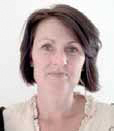
Netia, Globecast Group - Isabelle Michoux, Communication and Field Marketing Manager
How many Broadcast Asia shows, and what other shows do you attend?
NETIA first attended Broadcast Asia in 2006, and we will be present again this year, exhibiting with Broadcast Communications International (BCI), our local master dealer in Singapore. The show addresses the entire production workflow and attracts clients and potential prospects from neighbouring countries, so it's an important event to which we send our CEO and product managers, along with our new product releases. We do also attend the SMPTE Australia conference with a local distributor.
Why Broadcast Asia in contrast to relying on shows like NAB and IBC?
NAB primarily draws North and Latin American broadcast companies, and IBC typically covers EMEA, and we feel that BroadcastAsia is critical for reaching Asian markets. To ensure that we reach Asia and the Middle East, we and our parent company, GlobeCast, attend both BroadcastAsia and CABSAT.
What are the big technical trends driving business in Asia?
We see Asia's broadcasters working with partners to manage media more effectively and to get more value out of content across a greater geographic area, and we and GlobeCast are responding to the demand for regionalization by expanding our broadcast production and transport capabilities. Through close collaboration with Technicolor, GlobeCast has expanded its facilities to include a new multichannel HD playout facility, as well as new staff for postproduction and playout services, in Singapore. These facilities, along with NETIA media asset management solutions and GlobeCast's worldwide satellite and fibre network, will support broadcasters' growing need not only for local ingest and production, but also for regionalization and global distribution.
What are the biggest or most interesting recent installations of your products in the region?
For NETIA, Asia is a rather new market, though we do have radio broadcast installations at Radio Television of Malaysia, Voice of Vietnam and MediaCorp in Singapore. Given the newly expanded presence and capabilities of GlobeCast in Singapore, and the maturation of our NETIA CMS (content management system), we feel that we are well-positioned for big wins in 2011 and 2012.
